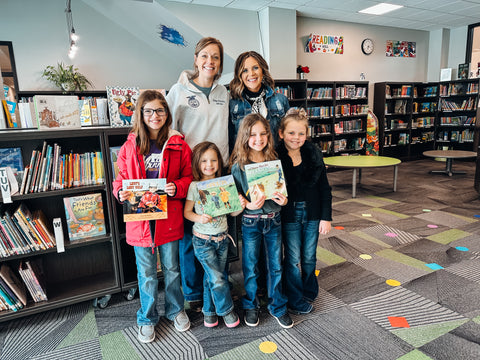Agriculture Education Belongs In Schools
More than a decade ago, a movie titled, “Barnyard,” swept the nation. Families with kids of all ages flocked to watch this farm story, where the main character was a bull, who walked on his back legs, had an udder, and spoke fluently.
The farmer and rancher in the movie were the side characters — deemed as dumb and cruel. And of course, the anti-agriculture propaganda was heavily laced throughout the entire movie.
This frustrated me, and it’s what propelled me to begin writing agriculturally-accurate books for kids, stories that would celebrate and highlight everyday heroes in rural America who provide us with the essentials of life — food, fiber, and energy.
Just this past week, we clicked “publish” on book number eight, and I’m so excited to share more about it soon, but in today’s column, I wanted to share why I believe agricultural education is not just important, but it’s absolutely vital in our public schools.

Did you know that Scholastic Magazine sends out its publication to every elementary school in the country? This magazine frequently prints articles that blame climate change on cattle, and encourage students in kindergarten through fifth grade to give up their cheese burgers to save the planet?
Did you know that PETA has found a loop hole that allows its animal rights curriculum to be presented in the public school system? In addition to PETA’s video games that target children at home, the radical organization also has a “Character Education” curriculum that falls under the Department of Education’s umbrella of teaching “respect, justice, civic virtue, citizenship, and responsibility for self and others.”
PETA’s curriculum is called “Teach Kind,” and it promotes that animals are unique and special; that farmers take calves away from their grieving mothers; that pigs are friends; that zoos, aquariums, and circuses are evil; and the list goes on.
As an example, one prompt in the curriculum asks the students to fill in the rest of the sentence. The prompt reads, “A baby calf on a dairy farm who’s taken away from his mother feels…”
What’s more, HSUS has its own curriculum titled the, “Certified Humane Education Specialist Program,” which includes videos, worksheets, coloring books, and activities that promote how kids can get involved in “animal protection” and how to form clubs to become activists and raise money for animal rights in their communities.
And don’t even get me started on how these ideologies have infiltrated the regular lessons, promoted by our government. The anti-animal agriculture bias in the science and biology lessons would floor you. Add in a few Netflix documentaries that are presented in high school and college classes, and one can begin to see the true picture of how dire the situation is.
While it’s frustrating to see this happening, there is a simple solution. We must continue to volunteer in the classroom, to donate agricultural books to schools and libraries, to open up our own farms and ranches for tours with the public, to engage in sharing our story, and to become the true and trusted source for consumers to learn more about where their food comes from.

This week, my daughter, Scarlett and I had the opportunity to do exactly this. Thanks to an invitation from the Pipestone Public School, we read my books and presented to 850 K-12 students. The most popular part of our program was playing “stump the cowgirls,” where the kids had the opportunity to ask us anything about agriculture. Their questions sure kept us on our toes, and it was an engaging, productive day that I hope plants positive seeds with these young people about who we are in the farming and ranching community.
I firmly believe that we can impact the next generation of consumers, one page, one story, and one conversation at a time. Let’s get to work, my friends!
Order my complete book set by clicking here.

